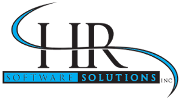Are you an HR professional looking to learn the basics of ERP systems? Look no further: we’ve got the information and insight you need right here. Whether you’re a veteran pro or just starting in the field, everyone can use some refresher knowledge on how ERP systems work their magic. So strap in, because it’s time for a quick tutorial on understanding this essential tool.
Introducing ERP: What is it and why do you need it
If your business is struggling to stay organized, it may be time to take a look at Enterprise Resource Planning (ERP).
ERP is a system that integrates all the functions and departments in an organization by connecting multiple databases. You can think of ERP as the ultimate organizational assistant. This system can help you streamline processes, automate operations, and improve efficiency.
By having a single unified system for gathering data from different sources, your business will be better organized and gain valuable insights to optimize performance. Not only that but transitioning to an ERP system makes the day-to-day running of a business much smoother. That way, you’ll have more time to focus on actually growing your business.
Features, benefits, and costs of ERP systems
ERP systems offer businesses a one-stop solution for managing their processes and operations. This powerful tool is like having a personal assistant that can undertake complex tasks: from automating business functions to cutting down costs and fueling efficiency.
In addition, ERP systems encompass loads of features such as inventory control, order tracking, and sales forecasting. These systems can easily navigate different sections and generate real-time reports, all in one place.
When it comes to costs, an ERP system’s price may seem intimidating. But, with such a wide range of benefits as being able to satisfy customer demands more efficiently or streamlining business processes, it’s ultimately an investment that pays off. Overall, ERP systems are a great way for any organization to take its business up a notch.
Understanding your data requirements: What’s needed for a smooth ERP implementation
Implementing ERP successfully requires an in-depth understanding of the data requirements needed. Fully understanding the company’s data structure, processes, and needs can help determine what kind of information needs to be transferred for a smooth transition.
Knowing any associated customizations or manual procedures beforehand it’s key. Doing so will help ensure that the ERP makes the best use of existing data structures and minimizes post-implementation work.
Also, evaluating current vendors and deciding which should provide support into the future is essential in making sure that potential downstream administration is understood and managed effectively. Going through these steps will help ease the transition to a new ERP system and optimize the setup process.
Building the right team to get you up and running quickly with an ERP system
Even if you’re ready to take the plunge into the ERP system workday, you may be feeling overwhelmed by all that comes with it. Before you start, it’s important to set yourself up for success by building the right team to ensure everything runs smoothly. This includes assigning people roles, long-term planning, and outlining everyone’s expectations.
Investing in this kind of preparation in advance will have an immediate impact. That way, your team won’t have to start from scratch and can hit the ground running with enthusiasm! With a few careful steps, you’ll soon find yourself on the path toward ERP system workday success.
Designing an effective workflow for your ERP system
Implementing an effective workflow for your ERP system is key to attaining maximum efficiency. Automation of tasks has become increasingly important as businesses strive to meet their objectives while keeping costs low.
With a streamlined workflow, crucial processes can be fully automated so that employees can spend more time on what matters: creating value for the company. A well-designed workflow should ensure that workflows are consistent and accurate, with minimal manual intervention.
The process should also be able to provide actionable insights and enable real-time data capture with minimized errors. This will ultimately save you both time and money in the long run, helping your business stay agile and competitive.
Common pitfalls to avoid going live with an ERP system
Launching a new ERP system can have an immensely positive impact on efficiency and accuracy in the workplace. However, proper planning and a comprehensive understanding of the system are required to ensure successful implementation.
It’s easy to overlook common pitfalls like lack of user buy-in, insufficient process documentation, or inadequate testing and quality assurance efforts. All of them can lead to costly stumbles when it comes time to go live with your new ERP system. When embarking on this journey play it safe and make sure you check out these common stumbling blocks before signing off on that big launch.
Conclusion
After exploring the basics of ERP systems and the key concepts associated with them, we can conclude that these systems are essential to helping businesses run more efficiently. In addition to integrating data between departments, ERP systems provide helpful insights in terms of accuracy, inventory control, and budget forecasting.
With every business’s bottom line relying on its ability to keep up with technology trends and customer demands, understanding what an ERP system is and how it works are key components of organizational success.
Although complex tasks such as inventory management weren’t always feasible with conventional methods, modern-day advancements have helped bridge this gap. It’s almost like taking a crash course in efficiency. Once you make the switch from manual methods to automated capabilities provided by an ERP system, you’ll wonder why you hadn’t done so sooner.
HRSS can help you transition your company’s HR department into an efficient, reliable, functioning unit
Related Posts

Strategic Workforce Planning with Workday

Innovative Strategies in Workday Solutions
About Us

With HR Software Solutions as your partner throughout the involved HR system implementation process, all of your needs will be met.